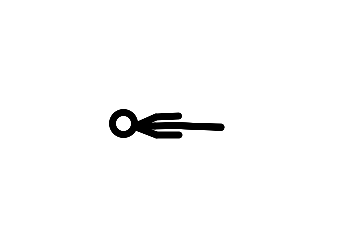In trying to master the decline, I’m also documenting it. These are the more difficult entries, both to write and to post.
You’d think apathy and anxiety would cancel each other out. But, no.
I’m traveling again. And I don’t know how long I’ll be able to do it. The planning is harder, the sleep disruptions are more disturbing. I still love it, even if I can’t fully feel all the feels.
In the last 24 months, there is a noticeable shift in my perceptions.
Apathy
I can’t get excited about things the way I used to. But I haven’t felt the usual rush being someplace different. And it is very different. Even 2 years ago I would’ve been preoccupied with all the little things, figuring out the new systems. People watching, museum-going, taking photos of buildings and plants.
I still do those things. I can’t put my finger on why I still do it, if it feels so… artificial.
I’m flat. Flat + anxious, honestly.
Anxiety
I had anxiety before the flight, before taking the bus for the first time, and going to a restaurant for the first time. Part of the pre-travel anxiety was doom-related. Not a voice in my head asking if this is the last time I’ll travel or what happens if the plane goes down. Instead, a fog. A grey mood around something unseen, blurry, in the peripheral vision in my head.
I used to have the kind of anxiety that manifests as depression. That’s what I thought it was. In the freeze reaction I used to have about imposter syndrome on the job. Terror at being found out (even though I was good at my job) turned into the inability to get out of bed in the morning, leading to bad job performance. That’s hard to admit. It got worse closer to the HD diagnosis in 2017. I even quit working in 2018.
Memory
A bigger part of pre-travel anxiety came from a vague sensation of forgetting something. Again, no voices in my head asking about passports or phone chargers. Just that sense that plans could be incomplete in some way that I don’t know that I don’t know about.
Someone shared childhood memories that 10 years ago we had. Today I don’t. Absolutely no memory of it. It doesn’t disturb me in the way you might think.
Part of the reason traveling works for me is that it avoids the groundhog day effect. When every day feels repeated, time passes so fast that I feel like I’m running out of life. This runs counter to the advice: give people with memory problems a very consistent routine. Maybe it works with Alzheimer’s and dementia, but for me the quality of the memory loss is distinctly different, needing a different solution.
I’m apathetic about my memory loss, but it still makes me anxious. What?
Conclusion
There’s an interaction between memory and anxiety that I haven’t read about in the HD literature. Anxiety that isn’t nervousness or specific voices. Just a vague sense of forgetting something important: an appointment, the keys just before you shut the locked door, or food on the stove. All of which I do more of, so is it another case of “just because you’re paranoid…”? I think it’s a legitimate reason for distress.
At the same time, the interaction between apathy and anxiety means that I’m happy enough, I guess, most of the time. I’m not particularly *bothered* by my anxiety. Also something I don’t read about in literature about either HD or anxiety.
I’ll just keep reading what I can find. And writing about things I don’t.














